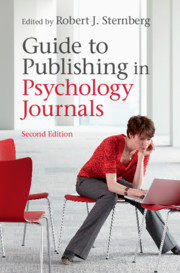Book contents
Part III - The Journal Submission and Resubmission Process
Published online by Cambridge University Press: 19 November 2018
- Type
- Chapter
- Information
- Guide to Publishing in Psychology Journals , pp. 129 - 216Publisher: Cambridge University PressPrint publication year: 2018

